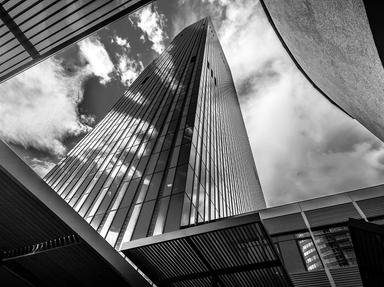Quiz Answer Key and Fun Facts
1. In 1973 an army general led a coup against Chilean president Salvador Allende, overthrowing his government. He was declared president of the republic by the military junta in 1974. It was not until 1990 that he finally stepped down. Who is this former Chilean leader?
2. After a career in the military of his country, Jean-Bédel Bokassa made it to the rank of colonel. In 1965 he led a coup against the reigning president David Dacko, taking over the position of president. In which African country with the city of Bangui as capital, did Bokassa have a long reign?
3. After the death of Romanian leader Gheorge Gheorghiu-Dej in 1965 one of his protégés took over as General Secretary of the Communist Party and later became the president of the Socialist Republic of Romania. In 1989 his regime was overthrown in a violent revolution, resulting in the execution of this president and his wife. Who is this former Romanian leader?
4. When his country was established in 1948, Kim Il-sung assumed the position of Prime Minister. In 1972 the constitution was changed so he could become the president of his country. He stayed in power until his death in 1994. In which Asian country was he the leader?
5. In 1965 a former lawyer and member of the House of Representatives took over the presidency in the Philippines. He would not step down until 1986, his reign being characterized by numerous claims of corruption, embezzlement and political repression. Who is this former Filipino leader, whose wife Imelda is infamous for her large shoe collection?
6. In 1932 Antonio de Oliveira Salazar became the 101st Prime Minister in his country. He established a regime known as Estado Novo or New State. He left office in 1968 after he suffered a brain haemorrhage. In which country was Salazar in power for over thirty years?
7. When the People's Republic of China was established in 1949, the leader of the Communist Party was appointed as Chairman of this country. He ruled the country until his death in 1976. Who is this former Chinese leader and founder of the People's Republic of China?
8. In September 1969 Muammar Gaddafi (the spelling of his name has many variations) led a coup against King Idris, ousting him from power. He then became the leader of the Revolutionary Command Council, a new ruling body leading his country. From 1979 he was officially appointed as the leader of his country, until he was killed during a revolution in 2011 as part of the Arab Spring. In which country did Gaddafi serve as the leader for 42 years?
9. In 1959 a Cuban revolutionary lead the coup against the reigning president. He was appointed as Prime Minister at the time and in 1979 became the 15th President of Cuba. In 2006 he would transfer his duties to his brother Raul. It wasn't until 2008 that he officially stepped down as president. Who was this Cuban leader, known for his long speeches?
10. When his father Francois died in 1971, Jean-Claude Duvalier (also known as Baby Doc) took over as president of his country. Among rising opposition, he finally stepped down in 1986, fleeing to France. Of what country was Duvalier the president for 15 years?
Source: Author
James25
This quiz was reviewed by FunTrivia editor
stedman before going online.
Any errors found in FunTrivia content are routinely corrected through our feedback system.

